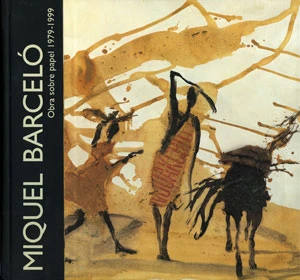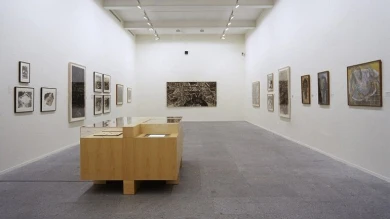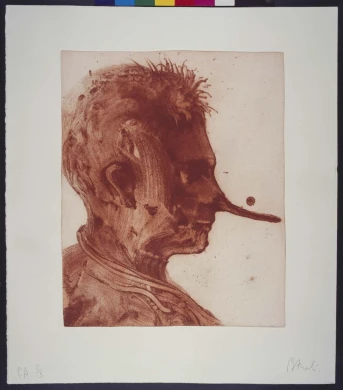Miquel Barceló en Silos

The work of this artist has been seen previously at the Museo Nacional Centro de Arte Reina Sofía in the collective exhibitions Artistas españoles. Obras de los años 80 y 90 en las Colecciones del museo in 1994 and Dibujos germinales. 50 artistas españoles. 1947-1998 in 1998. Also, in 1999 there is his solo exhibition at the Museo Reina Sofía: Miquel Barceló. Obra sobre papel. 1979-1999. On this occasion, a selection of the artist's ceramic production was exhibited at the Monasterio de Santo Domingo de Silos, where two of Barceló’s colleagues from the same generation and friends: José Manuel Broto and José María Sicilia had also exhibited. These three artists become friends during their stay in Paris and during the Eighties are considered the young Spanish artists most representative of a booming artistic scene.
Barceló begins his research in ceramics while in Mali in 1995. The high temperatures and wind prevented him from painting, so he begins to experiment with clay and makes his first terracottas. Some baked in the sun and others exploded in the oven but Barceló finds the methodology that allows him to develop his ceramic production. A stay in the workshop of a Majorcan potter is essential to learn about this craft and in order to perform his research, starts from the traditional techniques of clay in a wood oven. In 1999 in Les Rairies (France), he works together with master craftsmen Armelle and Ugo Jakubec. There he creates larger pieces to prepare for his exhibition at the Musée des Arts Décoratifs in Paris, which was to take place the following year.
In this exhibition at the Monasterio de Silos twelve ceramics are exhibited, which are testimony to the skill attained by Barceló with clay and glazes. This collection is accompanied by three paintings: Ostras, Granadas and Las cebollas amarillas, from 2001. The paintings contain small stalactites produced by the force of gravity, as they have been painted upside down.
During 2001 and 2002, Barceló works with a traditional ceramic factory in Vietri (Italy), where he creates specific pieces while working on the large ceramic skin for the chapel of San Pedro de la Catedral de Palma, inspired by the evangelical miracle of the multiplication of the bread loaves and fish. Indeed, the works Pan y Panes y peces I y II in this exhibition belong to this theme.
Also on exhibition are a set of jars, like Copa para sacrificios (1999) and Mapamundi III (1999) where human skulls are the central motif. Tres cráneos de caballo y uno de mulo (2000) and Dinosaurio fósil I in which the clay acquires a bone relief, Jarra cerdita (1999) and Camello (1999), which represents the animals around the pot as if they were holding it up with their own bodies and Peces blancos con anzuelo (2001), a pitcher from whose opening a baited hook protrudes to which three fish swim towards, they rise from the base to the neck of the piece to reach the food.
Two other fish arise from the mud plate Bandeja con dos peces (2001) and swim on the pigment surface in motion. Finally, also on display is the bowl Restos de ensalada (2001), a salad-bowl that has a relief of left over leaves on the bottom; it completes the exhibition of the artist who has found in clay one of his best means of expression.
Artists
Organised by
Museo Nacional Centro de Arte Reina Sofía
Image gallery



